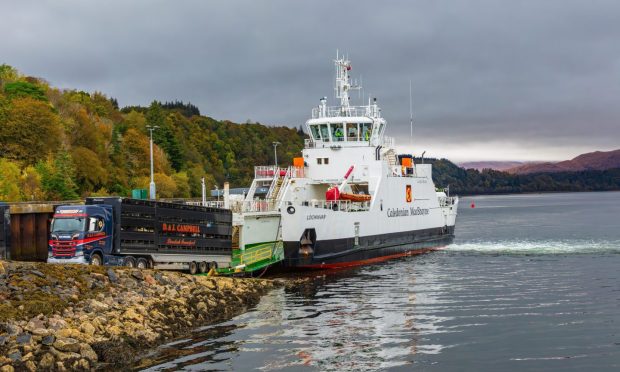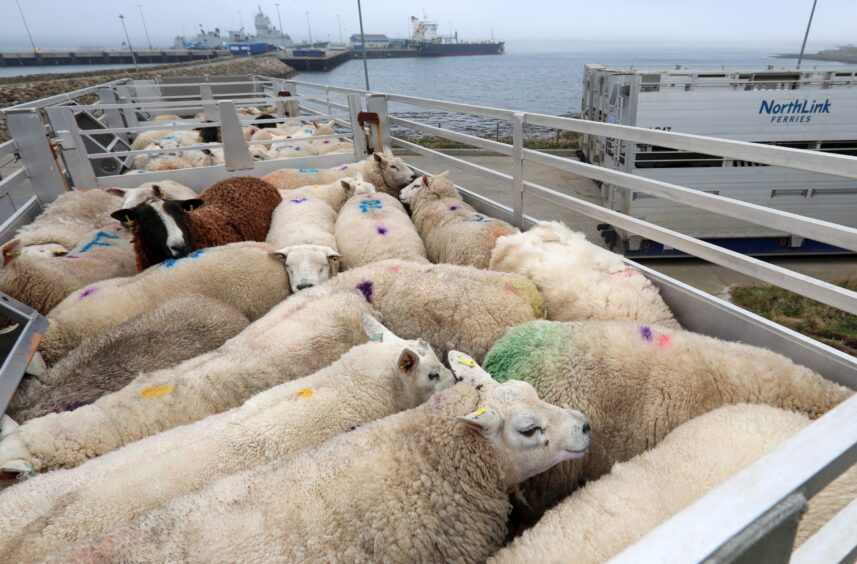Ferry operator Caledonian MacBrayne (CalMac) has urged farmers and crofters not to direct anger over livestock rules at port staff or vessel crew.
New restrictions have been placed on CalMac by the UK Animal and Plant Health Agency (APHA).
Livestock must now be accompanied on their travels by someone who is qualified to euthanise the animals, if necessary, on any ferry crossing of more than three hours.
New policy causes problems for island crofters and farmers
It introduces many difficulties for farmers and crofters on islands such as Barra.
They will either have to either find someone to accompany their livestock, or transport them to the mainland by way of a lengthy detour via Lochmaddy.
Longer overall journey times are detrimental to animal welfare.
Crofters’ body says rule is ‘nonsensical’
The Scottish Crofting Federation (SCF) said the new policy was “nonsensical”.
It will create a range of problems, the federation said, adding: “The only option for euthanasia in this situation would be a captive bolt.
“It is unlikely that a vet would be on hand to administer a lethal injection.”
And posing a string of questions, SCF asked: “Who would decide euthanasia is required?
How is the animal going to be restrained?
And how is disposal of the carcass going to be handled?
SCF chief executive Donna Smith said: “This feels like another move that will contribute to livestock keepers giving up in the face of adhering to impossible regulations which I’m sure will also have ripple-effect impacts on many businesses, hauliers and CalMac.”
The federation has written to David Hamill, CalMac area manager for the Outer Hebrides, Small Isles, Skye and Raasay, asking to be included in any stakeholder discussions aimed at resolving this issue.
‘Onerous’ measure
It has also informed Highlands and Islands MSPs about the problems the new policy poses for crofters.
SCF added: “We are hoping to come to an agreement preventing the imposition of this onerous and nonsensical measure.”
Calling for respect for harbour and ferry workers at all times, a CalMac spokeswoman said: “This is not the fault of port staff and vessel crew.
“It’s been a big surprise for them too.”
CalMac previously succeeded with an appeal against the controversial rule
APHA, the UK Government agency tasked with safeguarding animal and plant health, made a similar demand in 2022.
CalMac successfully appealed against it but the controversial policy has returned.
“We can no longer carry unaccompanied livestock without a transportation authorisation licence, the ferry operator’s spokeswoman said today.
We know this sudden change in regulations is not ideal for our customers on longer routes. We are working hard to resolve this issue and committed to finding a solution to suit farmers, CalMac staff and the regulator.” CalMac spokeswoman
She added: This applies to journeys lasting more than three hours. One of the requirements for the licence is that we should not accept unaccompanied livestock unless someone onboard is trained to euthanise animals on welfare grounds.
Only alternative was a livestock ban
“As we do not have that in place, we are unable to accept unaccompanied livestock on journeys of more than three hours. The alternative was not to accept any livestock on any route of any length which, of course, was not feasible.
She went on: “We know this sudden change in regulations is not ideal for our customers on longer routes, such as Barra to Oban, and are in close contact with NFUS (NFU Scotland) and other stakeholders. We are working hard to resolve this issue and committed to finding a solution to suit farmers, CalMac staff and the regulator.”



Conversation